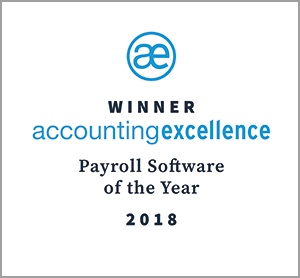1. Understand the changes ahead
PAYE Modernisation is commencing on 1st January 2019. Make sure you and your business are familiar with the new PAYE Modernisation system and understand how it will impact your payroll processing. PAYE Modernisation will not change the way your business calculates PAYE. It simply means that employers will need to report pay and statutory deductions to Revenue in respect of each employee as and when they are paid. Revenue has already commenced sending communications to employers to prepare them for the upcoming changes.
2. Planning for PAYE ModernisationCommunication is key to ensure a smooth implementation of PAYE Modernisation for all employers/bureaus. The benefits of planning ahead should not be overlooked.
PAYE Modernisation will apply to every employer in Ireland, large and small, and therefore a good plan will be crucial to your success. Having a plan in place means that you can allocate sufficient time and resources to be ready to comply with PAYE Modernisation, for example:
- Payroll processing bureaus will need to devise a plan to ensure that payroll information is received in a timely manner from clients
- Employers should ensure they have a plan in place to cater for when the payroll operator is on annual/sick leave etc.
3. Up-to-Date & Accurate Employee Data
Before the arrival of PAYE Modernisation, it is important to ensure that the personal details of all employees are up-to-date and accurate including first name, last name, address and PPS number. You will need to have an updated Tax Credit Certificate (P2C) for all your employees.
Upon receipt of a request from Revenue you will be required to submit a List of Employees by the end of October through Revenue’s Online Service (ROS). This list must be accurate to ensure Revenue and employer records are aligned in preparation for PAYE Modernisation.
4. PAYE Modernisation - Key Terms & The New ProcessRevenue Payroll Notification (RPN): Employers will need to check for RPNs each pay period, this will replace the current tax credit retrieval process (P2C). RPNs can be requested using your payroll software or through ROS, they will be available from mid December.
Payroll Submission Request (PSR): A
PSR will be used to submit payroll data to Revenue each pay period, this periodic file will need to be submitted to Revenue ‘on or before’ each pay period. PSRs eliminate the need for P30s, P35s, P45s and P46s. In addition, P60s will no longer be issued to employees. At the year end, employees will be able to view and print their official certificate of earnings and deductions from Revenue (MyAccount).
Payment:Every month, Revenue will issue a statement with payroll submission totals. Employers can either accept the statement as a monthly return or correct payroll data if the statement is incorrect. If an employer does not accept or edit the statement, Revenue will deem it to be accepted. There will be no change to payment arrangements, payment due dates will remain the same.
5. Outsource or Manage In-House?If your payroll is outsourced, you the employer are still responsible for complying with PAYE Modernisation. Check with your outsourced provider that they are ready to comply with the new legislation.
If you manage your payroll in-house, check that your payroll software provider will be PAYE Modernisation ready.
If you are an accountant or payroll bureau, ensure you communicate to your clients what is involved to comply with PAYE Modernisation.
Read our free PAYE Modernisation Guide for Bureaus.
6. Payroll Software
The Revenue Commissioners Office is encouraging employers and payroll bureaus to check that their payroll software is compatible with the PAYE Modernisation requirements. By using
PAYE Modernisation compliant payroll software, businesses will save time by streamlining their payroll processing, automating payroll submissions to Revenue and avoiding potential penalties. If you do not use payroll software, it would be advisable to research payroll software systems that can retrieve and submit the payroll information to ROS.
7. PAYE Modernisation Training
Get ready by attending free
PAYE Modernisation training sessions. BrightPay & Thesaurus Software are running a series of FREE webinars over the coming months with industry experts, including presentations from Revenue. These free webinars will give you an in-depth overview of what you need to do to prepare for PAYE Modernisation. The webinars are also CPD accredited for accountants and payroll bureaus.
Book your place now.
8. Fines and Penalties
At first, Revenue is likely to have a transition or grace period and be lenient when it comes to introducing penalties for non-compliance. However, this will not last too long. Any business that does not comply with
PAYE Modernisation will be easily identified by Revenue and could face penalties. More information on penalties is expected to be confirmed in the coming months.
